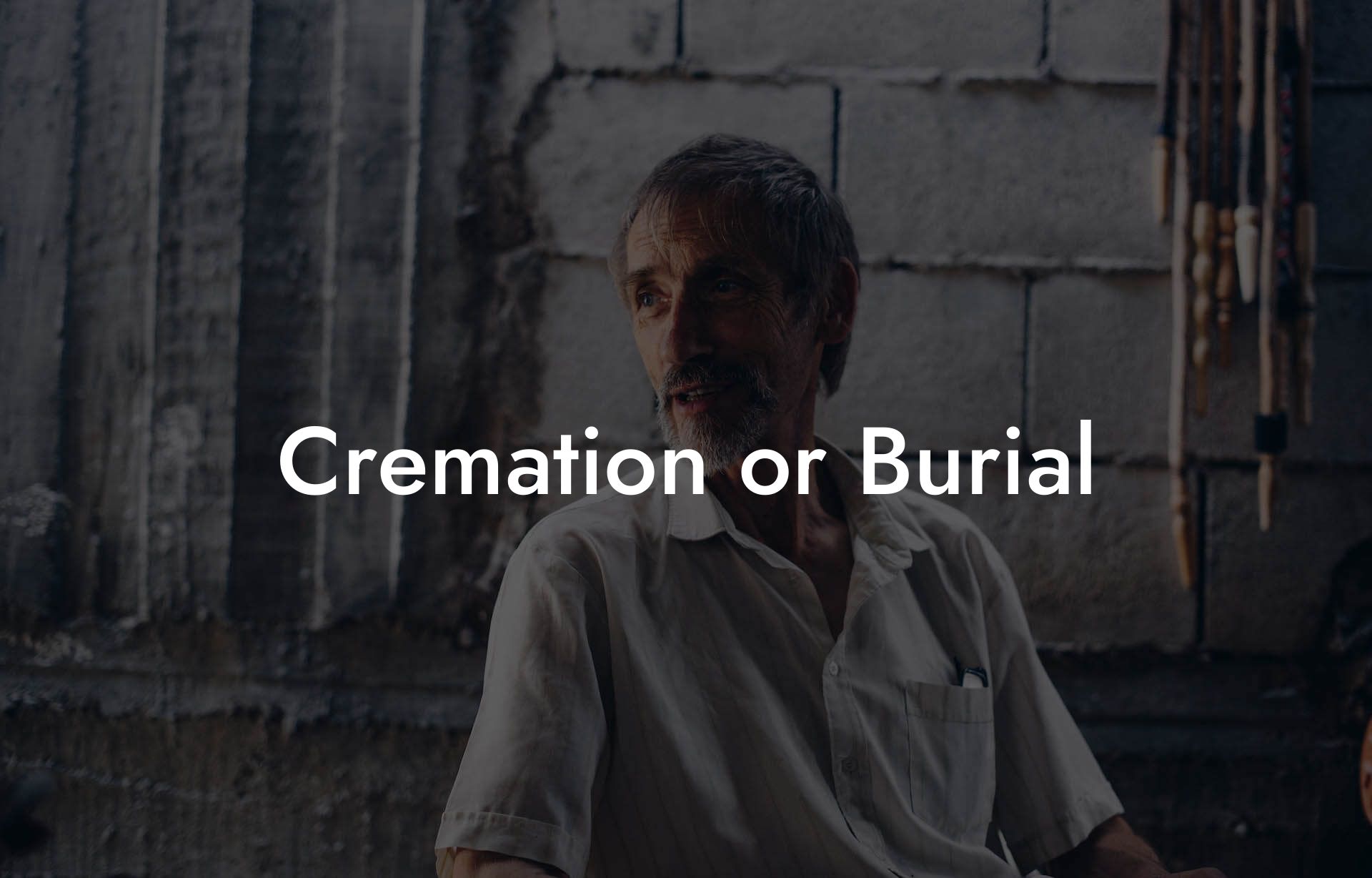Imagine a world where saying goodbye to a loved one is not only a sorrowful occasion but also an opportunity to celebrate their life and legacy in a unique, eco-friendly, and cost-effective way. Welcome to the world of cremation, a rapidly growing trend that's changing the way we think about death and memorialization.
Quick Links to Useful Sections
- What is Cremation, and How Does it Work?
- The Benefits of Cremation: Why It's Gaining Popularity
- Types of Cremation: Understanding Your Options
- Cremation Myths and Misconceptions: Separating Fact from Fiction
- Cremation and Memorialization: Honoring Your Loved One
- Frequently Asked Questions About Cremation
- Resources and Community Support: Your Next Steps
What is Cremation, and How Does it Work?
Cremation is a process that uses high-temperature flames to reduce a deceased person's body to its basic elements, leaving behind a residue of bone fragments and ashes. This process typically takes place in a cremation chamber, also known as a retort, where the body is exposed to temperatures of up to 2,000°F (1,093°C).
The entire process, from preparation to the final disposition of the ashes, is usually handled by a funeral home or crematorium. The resulting ashes, also known as cremated remains, can be stored in an urn, scattered in a special location, or buried in a cemetery or memorial garden.
The Benefits of Cremation: Why It's Gaining Popularity
Cremation is becoming an increasingly popular choice for many reasons. Here are some of the benefits that are driving this trend:
- Environmental Impact: Cremation is a more eco-friendly option than traditional burial, as it doesn't require the use of land, embalming fluids, or resources needed for casket production.
- Cost-Effective: Cremation can be significantly less expensive than traditional burial, with costs ranging from $1,000 to $3,000, compared to $7,000 to $10,000 for a traditional funeral.
- Flexibility: Cremation allows for more flexibility in terms of memorialization and final disposition, as the ashes can be scattered, buried, or stored in a variety of ways.
- Simplified Logistics: Cremation eliminates the need for a traditional funeral procession, gravesite preparation, and other logistical complexities.
Types of Cremation: Understanding Your Options
There are several types of cremation to consider, each with its own unique characteristics and benefits:
- Traditional Cremation: This is the most common type, where the body is cremated in a casket or container.
- Direct Cremation: This is a more cost-effective option, where the body is cremated without a funeral service or viewing.
- Green Cremation: Also known as alkaline hydrolysis, this is a water-based cremation process that's more environmentally friendly.
- Resomation: This is a type of cremation that uses a water-based process to break down the body, resulting in a more gentle and eco-friendly approach.
Cremation Myths and Misconceptions: Separating Fact from Fiction
There are many myths and misconceptions surrounding cremation. Here are some common ones:
- Myth: Cremation is not a dignified way to treat the deceased.
- Fact: Cremation is a respectful and dignified process that allows for a meaningful goodbye.
- Myth: Cremation is not accepted by all religions.
- Fact: Many religions, including Catholicism, Buddhism, and Hinduism, accept cremation as a valid way to handle the deceased.
Cremation and Memorialization: Honoring Your Loved One
Cremation offers a wide range of memorialization options, allowing you to honor your loved one in a unique and meaningful way:
- Scattering Gardens: Special areas designed for scattering ashes, often with beautiful landscaping and memorial features.
- Urn Gardens: Burial sites specifically designed for urns, often with memorial markers and landscaping.
- Home Urns: Beautiful containers designed to hold the ashes in a home or private setting.
- Tree Planting: A unique way to memorialize your loved one by planting a tree with the ashes.
Frequently Asked Questions About Cremation
Here are some frequently asked questions about cremation:
1. What happens to the ashes after cremation?
The ashes are typically returned to the family in an urn, and can be scattered, buried, or stored in a memorial location.
2. Can I still have a funeral service with cremation?
Yes, you can still have a funeral service with cremation, either before or after the cremation process.
3. Is cremation a more environmentally friendly option?
Yes, cremation is generally considered a more eco-friendly option than traditional burial, as it doesn't require land use or embalming fluids.
4. Can I pre-plan my cremation?
Yes, you can pre-plan your cremation, which can help alleviate the burden on your loved ones and ensure your wishes are respected.
Resources and Community Support: Your Next Steps
If you're considering cremation or have already chosen this option, here are some resources and community support groups to help you navigate the process:
- National Funeral Directors Association (NFDA): A professional organization that provides resources and guidance on funeral planning and cremation.
- Cremation Association of North America (CANA): A trade association that promotes cremation and provides resources for consumers and professionals.
- Online Support Groups: Join online forums and support groups, such as the Cremation Forum or the Grief Support Forum, to connect with others who have experienced loss.

